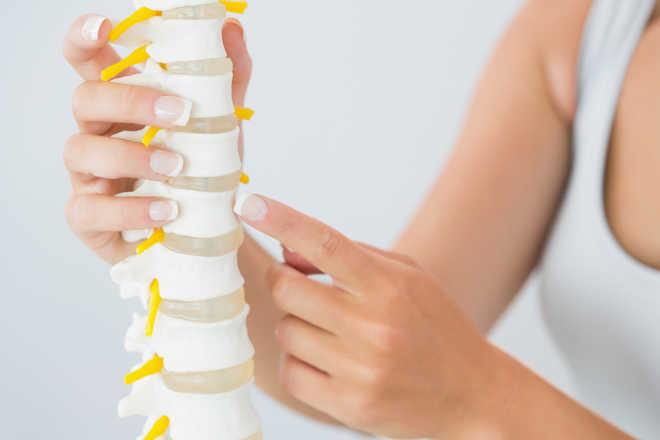
Washington
Modern humans have much weaker bones than their hunter-gatherer ancestors, according to a new study which found the rise of agriculture and drop in mobility, rather than urbanisation or nutrition, is to blame.
The study of the bones of hundreds of humans who lived during the past 33,000 years in Europe found the rise of agriculture and a corresponding fall in mobility drove the change, rather than other factors.
The findings shed light on a monumental change that has left modern humans susceptible to osteoporosis, a condition marked by brittle and thinning bones, researchers sad.
At the root of the finding, the researchers say, is the knowledge that putting bones under the "stress" of walking, lifting and running leads them to pack on more calcium and grow stronger.
"There was a lot of evidence that earlier humans had stronger bones and that weight-bearing exercise in modern humans prevents bone loss, but we didn't know whether the shift to weaker bones over the past 30,000 years or so was driven by the rise in agriculture, diet, urbanisation, domestication of the horse or other lifestyle changes," said Christopher Ruff, a professor at the Johns Hopkins University School of Medicine.
"By analysing many arm and leg bone samples from throughout that time span, we found that European humans' bones grew weaker gradually as they developed and adopted agriculture and settled down to a more sedentary lifestyle, and that moving into cities and other factors had little impact," said Ruff.
"By comparing the lower limbs with the upper limbs, which are little affected by how much walking or running a person does, we could determine whether the changes we saw were due to mobility or to something else, like nutrition," Ruff said.
When researchers analysed the geometry of bones over time, they found a decline in leg bone strength between the Mesolithic era, which began about 10,000 years ago, and the age of the Roman Empire, which began about 2,500 years ago.
Arm bone strength, however, remained fairly steady.
"The decline continued for thousands of years, suggesting that people had a very long transition from the start of agriculture to a completely settled lifestyle," Ruff said.
"But by the medieval period, bones were about the same strength as they are today," Ruff added.
Ruff notes that Paleolithic-style bones are still likely achievable, at least for younger humans, if they recreate to some extent the lifestyle of their ancestors, notably doing a lot more walking than their peers.
The research was published in the journal PNAS. — PTI



























